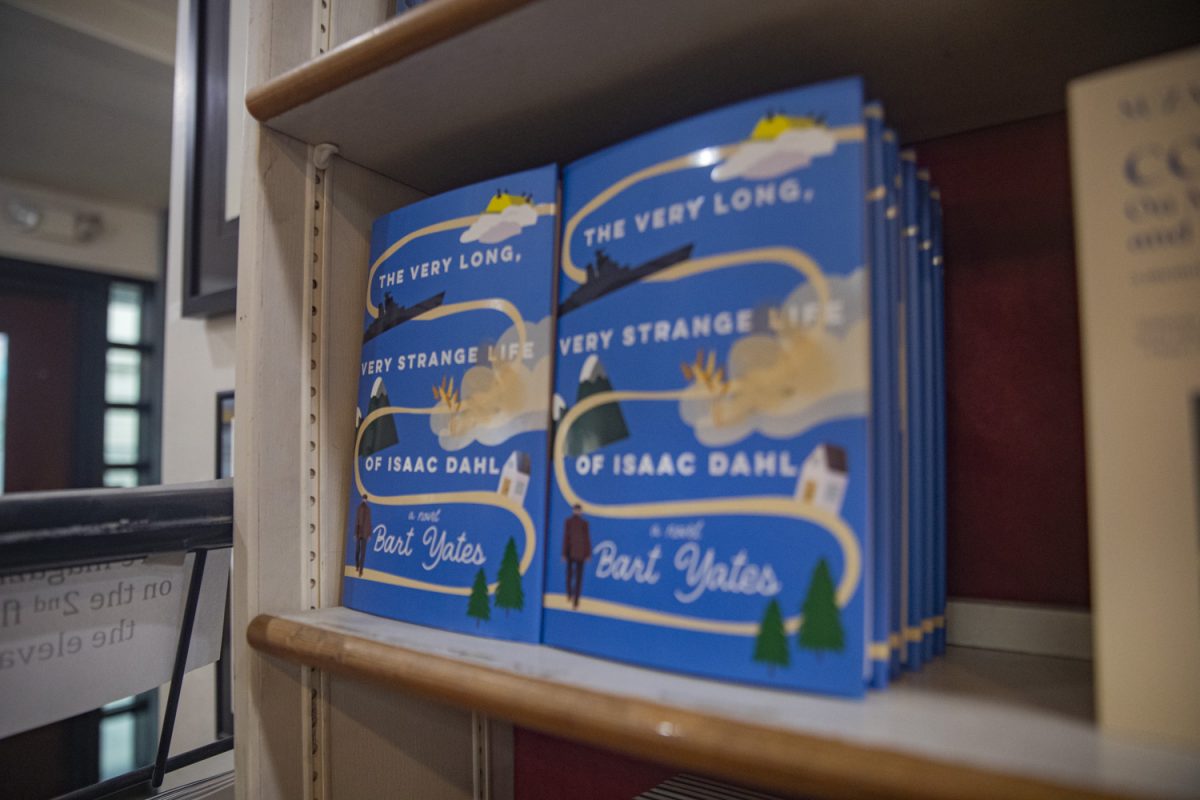Low drawls drift in from two men scrunched over a table in a corner; the moment is private, not meant to be seen.
Kehry Lane scans the scene with the eyes of a raptor.
As he scribbles notes, he makes the most of one of the final rehearsals before he and the Iowa City Community Theater present John Steinbeck’s Of Mice and Men at 7:30 p.m. Friday at the Iowa City Community Theater, 4261 Oak Crest Hill Road S.E. Performances will continue through Feb. 2. Admission is $5 for students, $13 for seniors, and $16 for the general public.
Steinbeck’s work, arguably one of the most famous American novellas, has presented certain challenges because it is so well-known.
"This is Steinbeck," Lane said. "It’s a play actors would die to do and directors would die to direct."
He has directed several shows at the Community Theater, but a play of this stature is a special experience.
"I think we tried to stay true to the story of the book as closely as possible," he said. "There are certain parts you have to be loyal to, because people know that and expect it. I felt free to take liberties with other parts and make them our own."
Brett Borden, who portrays George, formed bonds with the plot to help him to understand the complexity and the high intensity required by some of the scenes.
"I would say we had to do a lot of prep work emotionally," he said. "Some of these scenes, you have to dig deep in order to bring the emotion out and get to the place you need to be. To get there requires a lot of time to break down the scene by talking it out, then using that as a springboard for where you need to be."
Though understanding the emotional depth of the drama may have been difficult, finding a tie to the work proved to be easy for the actors. Nearly all in the cast members had read the book, a staple in high schools, and it stuck with them.
"A lot of people are able to relate to it, even though the situations in the 1930s are very different from now," said Gavin Conkling, who plays Carlson. "It’s a good story. It made an impact on me; it’s just one of those American classics."
When making production decisions, Lane paid attention to the book’s status as an American classic, focusing on the words and the story rather than trying to produce a hugely elaborate show. With the production elements on a back burner, the story remains at the front.
"The set dresser [Michael Blake] had thrown it out to me to be minimalistic, and I was very much of the same mind," Lane said. "When you have something that’s not literal, the audience must fill in the gaps, and that experience can actually be much richer."
While letting the audience members interpret the show in their own ways, it was important to the design team to decide how to present the show, filling in necessary details.
Jill Beardsley, the show’s costume designer, kept this in mind when finding costumes for the actors.
"[Reading the script], I highlighted any moment costumes were mentioned — of course Curly has a glove on his left hand, spurs for the boss, and the boys are poor, so they’re going to be dirtied up a bit," she said. "With things we found at thrift stores and things in stock, we mostly kept it in period."
The attention to detail was shared by everyone on the artistic staff. While observing rehearsals, Lane considered whether the squared toe on a pair of work boots was appropriate for the 1930s before deciding to switch out the boots to remain accurate.
The production-team members decided to be minimalistic, because they believed it was Steinbeck’s intention as he adapted his book for the stage.
"In the director’s notes, Steinbeck heavily suggests that it can be done in a minimalist way, without all the flash — you don’t need that," said Eric Burchett, who in addition to playing Curly designed the lighting for the production, using primarily ambers and blues.
The simplicity is integral to the message, he believes.
"It’s Steinbeck. It’s our history as Americans, where we’ve come from in a lot of ways," Burchett said. "The language doesn’t even sound dated — it still reads. The relationship between Lenny and George still reads. [The title] Of Mice and Men shows the best that we can be and the worst."






